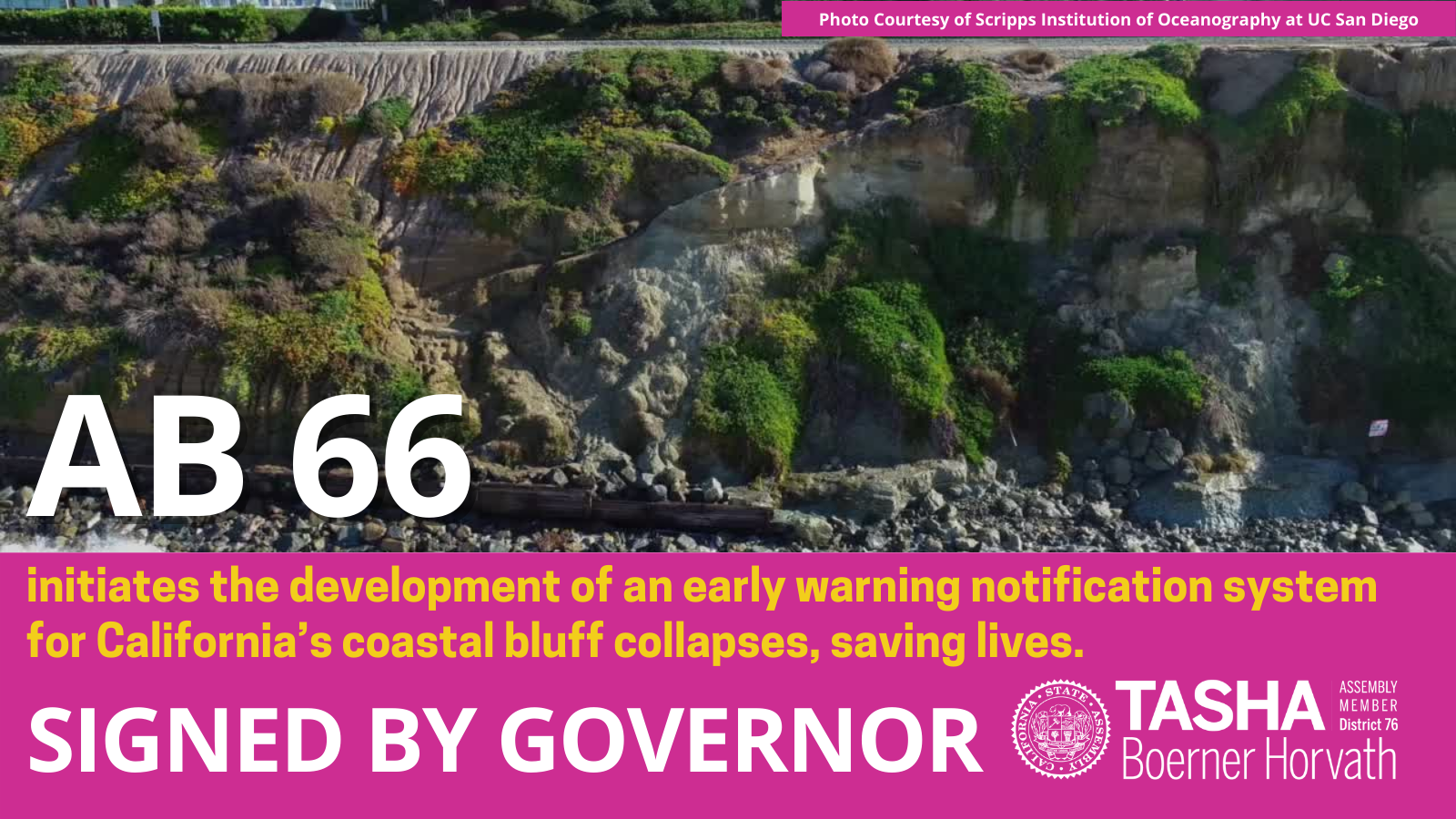
SACRAMENTO — Today, AB 66, by Assemblymember Tasha Boerner Horvath (D-Encinitas), was signed by Governor Newsom. This legislation tasks the Scripps Institution of Oceanography at the University of California, San Diego with conducting a research study to improve coastal monitoring capabilities and observations necessary for the state to develop a coastal bluff collapse early warning system to improve beach safety and prevent future fatalities.
AB 66 moved through the Legislature with overwhelming bipartisan support and is an essential first step in developing an early warning system, similar to what we have for earthquakes, that can alert beachgoers, municipalities, and emergency services personnel to the threat of an imminent bluff collapse. The research will focus on the Del Mar Bluffs as well as Beacon’s Beach — an active landslide area in Encinitas.
"With the passage of AB 66, we are one step closer to saving lives along California's coasts," said Assemblymember Boerner Horvath. "Bluff collapses are a constant threat to coastal neighborhoods in Northern San Diego County and across the California coast, presenting the risk of fatalities, injuries, and millions of dollars in damage to vital infrastructure."
Bluff collapses happen more often than not along California's coastline and are a threat anywhere waves, stormwater, and rainstorms can destabilize coastal terrain.
In addition to public safety concerns, eroding cliffs threaten extensive cliff-top development throughout the state, including highways, railways, waste-water, oil, natural gas, nuclear facilities, universities, several critical military bases, and numerous state beaches and parks. The U.S. Geological Survey estimates up to 1,000,000 residents and $320 billion in property throughout California are at risk due to erosion and flooding.
"Thank you, Assemblymember Boerner Horvath, for supporting research to improve our understanding of cliff erosion and prioritizing public safety," said Mark Zumberge, a research geophysicist at Scripps Institution of Oceanography at UC San Diego. "Our goal is to learn how deformations are impacted by tides, large surf, groundwater, and rainfall to see if we can answer the question of whether signals exist that can forecast where and when an increased risk for collapse is developing."
The new law will take effect on January 1, 2022.
###